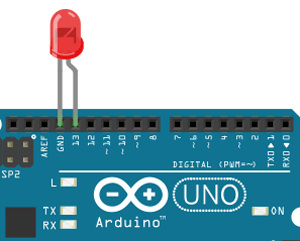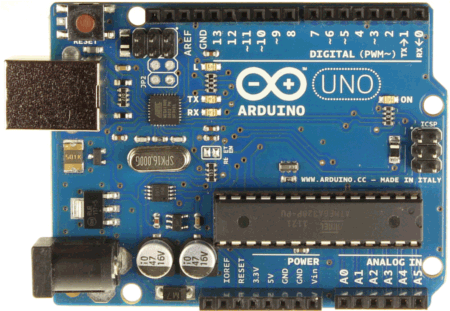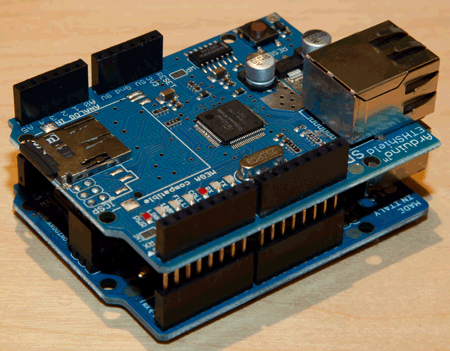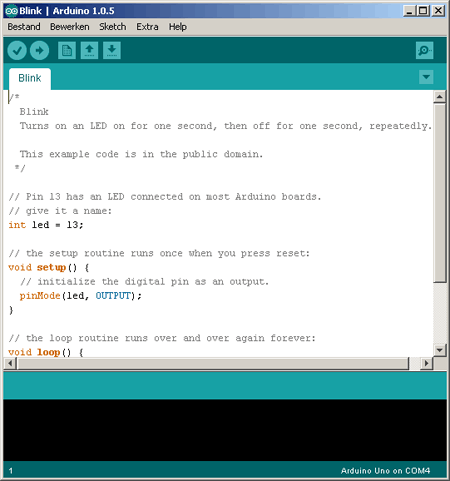
|
|
An analog 2-axis joystick with 2x 10K ohm pots and push button function.
Connector pin descriptions are printed on the PCB. A push-on operating knob is included with the module.
|
|
IMAGE
|
A sensor module to detect flames. The spectral sensitivity of the sensor
is optimized to detect emissions from naked flames. The output signal
"DO" is pulled high (active high) when a flame is detected. The switching
threshold is adjustable via a preset pot. An analog output signal from
the sensor is available at pin "AO".
- Typical spectral sensitivity: 720-1100nm
- Typical detection angle: 60℃
|
|
IMAGE
|
|
RGB-LED with clear lens and built-in 150 ohm series resistor for 5 V operation. The
PCB printing is incorrect, it shows the blue and red connections switched. The LED
has a common cathode (the "-" Pin).
|
|
IMAGE
|
|
This module consists of an IR-LED and a photo transistor which can be used to read a
pulse when a fingertip is positioned between the LED and photo transistor.
The module requires additional external circuitry. A 330 ohm series resistor for the
LED is included. The 5 V supply connects to the centre pin, ground to the "-" pin. The
photo transistor signal is available on the "S" pin which has a built-in pullup resistor.
|
|
IMAGE
|
|
This module incorporates a mercury tilt switch and clear red LED. "G" is the
common connection to the LED cathode and one terminal of the switch. "S"
is the other switch contact and "L" connects to the LED anode (a series
resister is required for the LED, 220 ohms for example). The "+" pin
connects to a 10 K ohm pullup resistor connected to "S" of the switch.
|
|
IMAGE
|
|
A Hall sensor module with analog output signal. The ground pin is marked "-",
centre pin is +5 V supply (Vs) and the output signal is on the "S" pin.
|
|
IMAGE
|
A relay module suitable for direct connection to an Arduino board.
The module requires 5 V power supply. The input control signal is identified with an "S".
The relay has one change-over contact. It is capable of switching resistive loads up to 10 A at 250 VAC and up to 10 A at 30 V maximum.
Do not forget to provide interference suppression for the switched load!
|
|
IMAGE
|
|
Linear Hall Sensor module to detect the presence of a magnetic field near
the sensor. Variables such as field strength, polarity and position of the
magnet relative to the sensor will affect point at which the "DO" output
switches to a high level (i.e. active high). The circuit sensitivity can be
adjusted with a pot. An analog output signal from the sensor is available
at pin "AO".
|
|
IMAGE
|
|
RGB-LED with an SMD housing and no series resistor. The PCB printing is incorrect, it
shows the green and red connections switched. The LED has a common cathode (the
"-" pin). A suitable resistor value would be 220 ohms.
|
|
IMAGE
|
|
Clear 5mm LED for direct operation from 5V. The LED color automatically
cycles through a seven-color sequence. The 5 V supply connects to the "S" pin
and ground on the centre pin.
|
|
IMAGE
|
|
Mercury tilt switch which makes or breaks depending on its attitude.
|
|
IMAGE
|
A module with a digital "One Wire" temperature sensor (DS18B20). A 4.7K ohm
pullup resistor is included for the bus signal. Additional sensors can be added to the
bus and individually addressed. Only one pullup resistor should be connected to the
bus, irrespective of the number of sensors connected.
- Temperature range: -55 to +125 ℃
- Typical accuracy: 0.5℃
- Resolution: 9-12Bit, depending on the program
Measures the ambient temperature.
The module uses a single-bus digital temperature sensor DS18B20, the external power supply voltage range is 3.0 V to 5.5 V.
No standby power.
Measurement temperature range:
-55 ℃ to +125 ℃ (67 ℉ to 257 ℉)
Between -10 ℃ to +85 ℃ the range accuracy is ±0.5 ℃
The temperature sensor is a programmable resolution of 9 to 12 temperature conversion to 12-bit digital format with a maximum of 750 milliseconds formula.
User definable nonvolatile temperature alarm settings.
Each DS18B20 has a unique serial number which can be used when multiple DS18B20 temperature sensors are used.
|
|
IMAGE
|
A microphone module featuring a high-sensitivity large-format electric capsule.
Output "DO" (active high) is switched when the sound level exceeds a preset level.
A pot allows adjustment of the level. The analog output signal is available at the "AO" pin.
|
|
IMAGE
|
|
Touch sensitive switch. Touching the sensor pin produces an output at the
"DO" pin. The output is not a clean signal but includes 50 Hz mains induced
signals ("mains hum"). The output signal is "active high" and the circuit
sensitivity can be adjusted with a pot. An analog output signal from the
sensor is available at pin "AO".
|
|
IMAGE
|
|
The 5mm LED has a common cathode connected to the "-" pin on the PCB. The
centre pin connects to the red anode and the "S" pin connects to the green
anode. No series resistor is included in the circuit. A suitable value for low
voltage operation would be 220 ohms.
|
|
IMAGE
|
|
Red Laser module for direct connection to a 5 V supply. Connect the 5 V supply to
the "S" pin and ground to the "-" pin. Transmission wavelength: 650nm.
|
|
IMAGE
|
|
A built-in 10 K Ohm resistor connected between the middle and "S" pin is available
for pull up or pull down use. The switch contacts connect to the two outer pins. Load
switching max: 12VDC 50mA
|
|
IMAGE
|
NTC Temperature sensor module. The sensor resistance is approximately 10 k ohm
at room temperature. The NTC sensor is connected between the two outer pins. A
fixed 10 K ohm resistor connected between the middle pin and the "S" pin is included
on the module. This simplifies the building of a measurement bridge circuit.
- Temperature range: -55 to +125 ℃
- Typical accuracy: 0.5℃
|
|
IMAGE
|
|
A microphone module with a small electret capsule. Output "DO" (active high) is switched when the sound level exceeds a preset level.
A pot allows adjustment of the level. The analog output signal is available at the "AO" pin.
Except for the smaller size of the capsule and its lower sensitivity the module is identical to the "High sensitivity sound detection module" module.
|
|
IMAGE
|
|
Temperature sensing module using an NTC thermistor. The output signal
at "DO" switches high when the preset (adjustable) temperature is
reached. An analog output signal from the sensor is available at pin "AO".
|
|
IMAGE
|
|
The 3mm bi-color LED has a common cathode (- pin), connected with the "-" pin on
the PCB. The centre pin activates the red light and the "S" pin the green light. No
series resistor is included in the circuit. A suitable value for low voltage operation
would be 220 ohms.
|
|
IMAGE
|
A built-in 10 K ohm resistor is connected between the centre pin and the "S" pin and
can be used as a pull up or pull down resistor. The push button connects the two
outer pins.
The Button.h library (available from Arduino) is suitable for use with this.
|
|
IMAGE
|
|
LDR (Light Dependant Resistor). Dark resistance >20M Ohm, light <80 Ohm. The
two outer pins connect to the LDR. A fixed 10 K ohm resistor connected between
the middle pin and the "S" pin is included on the module. This simplifies the
building of a measurement bridge circuit.
|
|
IMAGE
|
|
The IR-LED can be used to build a light barrier or an IR remote control signal
transmitter.
|
|
IMAGE
|
|
IR light reflection switch, useful for obstacle avoidance or line following
on models that move around the floor. An obstacle in front of the
sender/receiver diodes will cause the "out" pin to be pulled low (active
low). A pot allows adjustment of the circuits sensitivity. The detection
distance can be up to approximately 1 cm.
|
|
IMAGE
|
Electronic buzzer for 5 V operation. Ensure correct polarity!
Positive supply to the "-" pin and ground to the "S" pin!
Data: Typical operating frequency 4000Hz at 80dB min, 5V DC at 5mA typical
TMB12A05 or equivalent.
Tip to avoid mix up: The buzzer housing is slightly taller than the loudspeaker
housing and has a label showing the + pin ident.
|
|
IMAGE
|
|
This reed switch offers an analog as well as a digital interface. The "G" pen is
connected to GND, the "+" pen to 5V DC, the "AO" pen offers the analog
output while the "DO" offers the digital output. A potentiometer is used as a
pull up resistor.
|
|
IMAGE
|
|
A built-in 10 K ohm resistor is connected between the centre pin and the "S" pin
and can be used as a pull up or pull down resistor. The switch contacts connect to
the two outer pins.
|
|
IMAGE
|
|
A module with a temperature/humidity sensor type DHT11, Temperature range:
0 - 50℃ (+/-2℃), Rel. humidity: 20-95% (+/-5%), Supply voltage: 3 to 5.5V.
With a built-in 10 K ohm pullup resistor. Library: DHT.h
|
|
IMAGE
|
Infrared sensor type 1838 for use with 38KHz IR signals.
- Supply voltage: 2.7 to 5.5 V
- Frequency: 37.9 KHz
- Receiver range: 18m (typical)
- Receiving angle: 90°
- Library: https://github.com/z3t0/Arduino-IRremote
|
|
IMAGE
|
|
IR-reflection sensor, useful for obstacle avoidance applications. When
an obstacle is in front of the IR sender/receiver the "Out" pin is switched
low (active low). The circuit sensitivity can be adjusted with a pot. The
obstacle detection distance can be adjusted up to approximately 7cm.
An enable (EN) jumper can be fitted for continuous operation. Removal
of the EN jumper allows an external logic signal (at the EN pin) to switch
the detector on and off (low = active, high = off).
|
|
IMAGE
|
Mini loudspeaker module ca. 16 Ohm Impedance, (maximum continuous current
through the speaker coil is approximately 25 mA.) Don't mix this one up with the
buzzer module! The outer two pins connect to the speaker. Polarity is unimportant.
Tip to avoid mix up: The loudspeaker housing is not as tall as the buzzer housing.
|
|
IMAGE
|
|
The reed switch is connected between the two outer pins on the PCB. Without a
magnetic field the contacts remain open.
A built-in 10 K ohm resistor is connected between the centre pin and the "S" pin.
It can be used as a pull up or pull down resistor.
|
|
IMAGE
|
|
Rotary encoder useful for making an electronic pot etc. Connection idents are
printed on the PCB.
|
|
IMAGE
|
|
The Hall-Sensor-Switch (bipolar) module features a 44E311, 3144EUA-S or
3144LUA-S sensor together with an LED and resistor. The LED switches on when a
magnetic field is detected. The ground pin is marked "-", centre pin is +5 V supply
(Vs) and the output signal is on the "S" pin.
|
|
IMAGE
|
|
Vibration sensor module. The momentary switch contacts are connected between the
two outer pins.
|
|
IMAGE
|
|
Slotted light barrier. The middle pin connects to + 5 V supply and the pin marked "-"
connects to ground. The output signal (with a 10 K ohm pullup to +5 V) is available on
the pin on the right.
|



